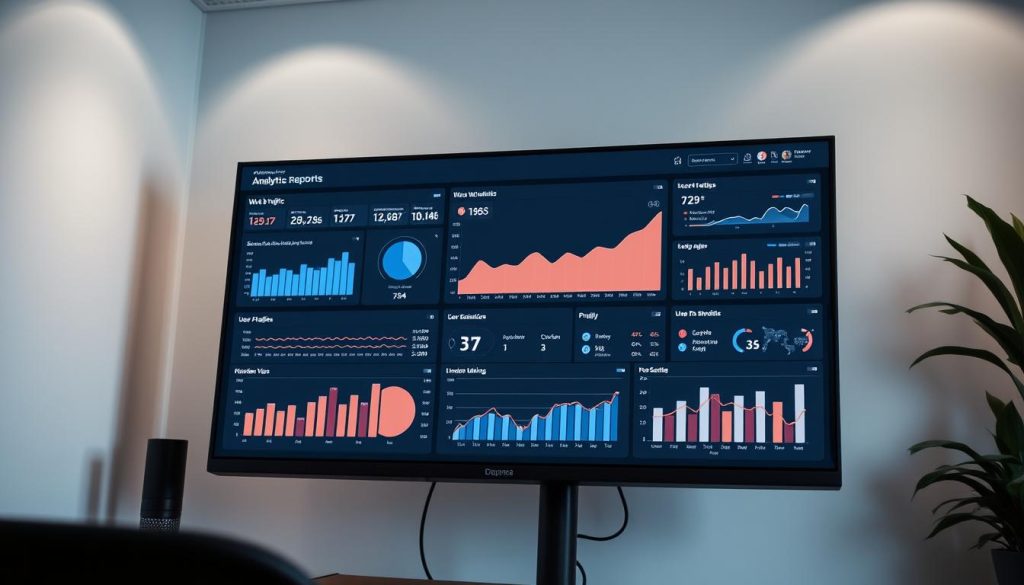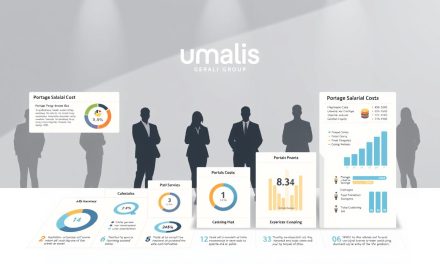Understanding how people use your website is key to success. This guide introduces a powerful platform for gathering that essential information. You will learn how to connect this tool to your website and start making smarter choices.
This platform collects valuable data about your visitors. It shows you where they come from and what they do on your site. This user behavior data helps you see what works and what needs improvement.
For any modern business, this knowledge is power. It turns guesswork into clear, actionable insights. A proper setup is the first step toward better performance and growth.
This process connects your site to a sophisticated analytics infrastructure. It automatically tracks visits, engagement, and conversions. You gain a complete view of the customer journey.
We will walk you through the entire setup. This includes creating an account and implementing the tracking code. You can learn more about the value of this process in our guide on performance tracking with this essential tool.
Table of Contents
Key Takeaways
- Connecting an analytics platform provides deep insights into website visitor behavior.
- This tool helps businesses make decisions based on real data, not guesses.
- The setup process involves linking your site to a data collection infrastructure.
- You can track where users come from and how they interact with your content.
- Proper implementation is the foundation for improving website performance.
- The system offers a complete view of the customer’s path from arrival to conversion.
Getting Started with Google Analytics Integration
Before you can harness the power of visitor data, you must complete these essential initial steps. The process involves two main phases that establish your measurement foundation.
Creating Your Analytics Account
Your first action is establishing the main container for all your data. Visit the analytics platform’s website and click « Start Measuring » for new users. Existing users should navigate to Admin settings to create a new account.
You’ll need appropriate permissions to proceed. The system requires at least Viewer-level access at the account level. Provide a clear account name during this setup phase.
Configure your data-sharing preferences carefully. This determines what information you share with the service provider. Accept the necessary terms of service to continue.

Setting Up a Google Analytics 4 Property
After account creation, focus on property configuration. This represents your specific website or application. You’ll need Editor role permissions for this step.
Choose a descriptive property name that identifies your business. Select your reporting time zone and currency preferences. The time zone setting is critical for accurate date attribution.
Specify your industry category and business size. The platform uses this information to customize default reports. You’ll also indicate your primary usage intentions.
A unique measurement ID (starting with « G-« ) is automatically generated. This identifier connects your site to the specific property. For deeper understanding of measurement strategies, explore our guide on SEO analytics best practices.
Implementing Google Analytics on Your Website
Implementation is the critical bridge that connects your website to the data collection engine. You have several paths to add this powerful tool, each suited to different technical skill levels and platforms.

Adding the Google Tag Manually
For direct control, you can add the tracking code manually. This involves copying a specific JavaScript snippet from your account settings.
You must paste this code immediately after the
tag on everypageyou wish to track. This method ensures consistentdatacollection across your entirewebsite.
Utilizing CMS and Google Tag Manager Solutions
Most content management systems simplify the process. Platforms like WordPress or Shopify often have a dedicated field in their settings. You just enter your measurement ID to add google analytics site-wide.
For advanced flexibility, consider using google Tag Manager. This tool acts as a central container for multiple tracking tags. It allows you to manage your configuration without constantly editing your site’s code.
After completing these steps, verify the setup is working correctly. Check the real-time report in your interface to see active user data.
Exploring Reports and Discovering Insights
The platform’s reporting features transform raw data into actionable business intelligence. These tools help you understand visitor patterns and optimize your digital presence.

Real-Time Reporting and Event Tracking
Real-time reports show current activity on your site. You can see active visitors, their locations, and which page they view. This immediate information helps verify tracking setup.
Event tracking captures user interactions automatically. It records page views, clicks, and downloads. Custom events track specific business actions that matter most.
| Report Type | Primary Purpose | Key Metrics |
|---|---|---|
| Real-Time | Monitor current visitor activity | Active users, page views, traffic sources |
| Engagement | Analyze content performance | Session duration, scroll depth, bounce rate |
| Acquisition | Track traffic sources | Organic search, social media, direct visits |
| Conversion | Measure goal completions | Conversion rate, revenue, customer journey |
Diving into Conversion Paths and User Behavior
Conversion paths reveal how visitors reach your goals. You see the sequence of interactions before completion. This data helps allocate marketing budgets effectively.
Engagement reports show which content performs best. You identify popular pages and optimize underperforming ones. This improves overall user experience.
The platform provides comprehensive behavioral data. You gain insights into how people interact with your content. This knowledge drives informed business decisions.
Mastering Google Analytics Integration
Advanced configurations take your measurement capabilities beyond basic tracking. Proper setup unlocks the platform’s full analytical power for comprehensive business insights.
Advanced Configurations and Data Streams
Multiple data streams connect different digital properties to your analytics account. Each website or app requires its own stream with platform-specific settings.
Custom dimensions extend default data collection. They capture business-specific information like customer loyalty tiers or content authors. This customization provides deeper insights into user behavior.

Integrating with Other Google Tools and BigQuery
The platform works seamlessly with other marketing services. You can import conversion data into advertising platforms for better campaign optimization.
BigQuery integration exports raw analytics data to Google’s enterprise warehouse. Technical teams can perform unlimited analysis without sampling constraints. This enables advanced predictive modeling using complete customer datasets.
Leveraging Machine Learning for Predictive Insights
Machine learning models automatically analyze your data for emerging trends. They predict future user actions like purchases or churn risks.
Predictive metrics help create high-value audiences before conversion actions occur. This enables proactive marketing interventions through integrated advertising platforms.
For deeper understanding of these capabilities, explore our comprehensive analytics insights guide. Proper documentation ensures knowledge continuity as business needs evolve.
Conclusion
With your tracking infrastructure fully operational, you’ve established a foundation for continuous digital optimization. This setup transforms your website into a measurable asset that generates valuable information about visitor behavior.
The knowledge gained from each section of this guide equips you to leverage sophisticated customer intelligence. Your business can now make evidence-based decisions using concrete data rather than intuition.
Remember that this is an ongoing service requiring regular review of your tracking implementation. Explore our comprehensive analytics guide for deeper insights into advanced features and measurement strategies.
Your investment positions your digital presence for sustained growth through continuous testing and optimization across all customer touchpoints.
FAQ
How do I set up a Google Analytics account for my website?
First, visit the Analytics website and sign in with your Google account. Click « Start measuring, » then follow the prompts to create a new account for your business. You will need to provide details like your account name, property name, and reporting time zone.
What is the difference between manually adding the code and using a tag manager?
Adding the tracking code manually involves placing a snippet of JavaScript directly into your site’s HTML. Using a tag manager, like Google Tag Manager, provides a user-friendly interface to deploy and manage the code without editing your site’s source files, offering more flexibility and control.
What kind of data can I see in the real-time reports?
The real-time reports show you what is happening on your site at that very moment. You can see the number of active users, the pages they are viewing, and the events they are triggering, which is great for testing new configurations or monitoring a live campaign.
How can I track specific user actions, like button clicks or form submissions?
These actions are tracked as « events. » In a Google Analytics 4 property, you can set up event tracking directly within the interface or via Google Tag Manager. You define the parameters for the action you want to measure, such as when a user completes a purchase or downloads a file.
Can I connect my data to other platforms for deeper analysis?
Yes. You can link your account to other services like Google Ads to see campaign performance. For advanced analysis, you can connect to BigQuery. This allows you to export your raw data and run complex SQL queries for custom reporting.
What are predictive metrics and how do they work?
Predictive metrics use machine learning to forecast future user behavior. The system analyzes your historical data to identify users likely to make a purchase or churn. You can then create audiences based on these predictions for targeted marketing efforts.





